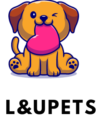
Understanding the Behavior of Dogs with Ticked Patterns
Pet owners often find themselves intrigued by the unique behavior displayed by dogs with ticked patterns. From territorial marking to submission gestures, these dogs have a distinct way of communicating.
This comprehensive guide aims to shed light on the behavior of dogs with ticked patterns.
Behavioral Insights into Ticked Dog Patterns

1. Territorial Marking: Dogs with ticked patterns often engage in territorial behavior, using urine to mark their scent and establish dominance.
2. Seeking Information: These dogs gather crucial information by sniffing and tasting urine, helping them determine gender, reproductive status, and health of other animals.
3. Submission Expressions: Dogs with ticked patterns may display submissive behavior by licking the urine of dominant dogs or older pack members as a sign of respect.
Addressing Medical Factors of Ticked Dog Patterns
While ticked patterns are primarily behavioral, it’s essential to consider potential medical factors that could influence a dog’s behavior. Routine check-ups and consultations with a veterinarian can help rule out underlying health issues that may be contributing to certain behaviors.
Managing and Training Dogs with Ticked Patterns
Effective guidance and training techniques can help pet owners address and
Nurturing positive behaviors in dogs with ticked patterns is crucial for a harmonious relationship between pet and owner. Consistent training, reinforcement of desired behaviors, and providing mental stimulation can help dogs with ticked patterns lead fulfilled lives.
Case Studies of Dogs with Ticked Patterns
1. Max’s Marking Behavior: Max, a two-year-old Labrador Retriever with a ticked coat, displayed excessive territorial marking behavior during walks. Through consistent training and positive reinforcement, Max’s marking behavior gradually decreased, highlighting the effectiveness of behavior modification techniques.
2. Bella’s Coping Mechanism: Bella, a four-year-old Border Collie with a ticked pattern, developed a habit of licking urine when anxious or stressed. With the help of a veterinarian and professional trainer, Bella’s behavior improved, emphasizing the importance of addressing underlying emotional triggers in dogs with ticked patterns.
Conclusion: Fostering Healthy Behavior in Dogs with Ticked Patterns

Understanding and addressing the unique behaviors exhibited by dogs with ticked patterns is essential for their well-being. By decoding their communication cues, addressing medical factors, and implementing positive training techniques, pet owners can nurture a healthy and balanced behavior in dogs with ticked patterns. Building a strong bond with these dogs entails patience, consistency, and a deep
understanding of their individual needs.
In conclusion, dogs with ticked patterns exhibit unique behaviors that can be deciphered through a combination of instincts, communication, and training. By recognizing and addressing these behaviors, pet owners can ensure the well-being and happiness of their canine companions with ticked coats. Building a strong bond based on trust, communication, and positive reinforcement is key to fostering a harmonious relationship with dogs displaying ticked patterns.
Whether it’s territorial marking, seeking information, or expressing submission, each behavior serves a purpose in a dog’s natural communication repertoire. With proper understanding, training, and management, pet owners can navigate and appreciate the intricacies of ticked dog patterns, providing a nurturing environment for their beloved pets.
By embracing the uniqueness of dogs with ticked patterns and tailoring care and training to their specific needs, pet owners can create a fulfilling and enriching relationship with their canine companions. Through patience, guidance, and love, dogs with ticked patterns can thrive and bring joy and companionship to their owners for years to come.
